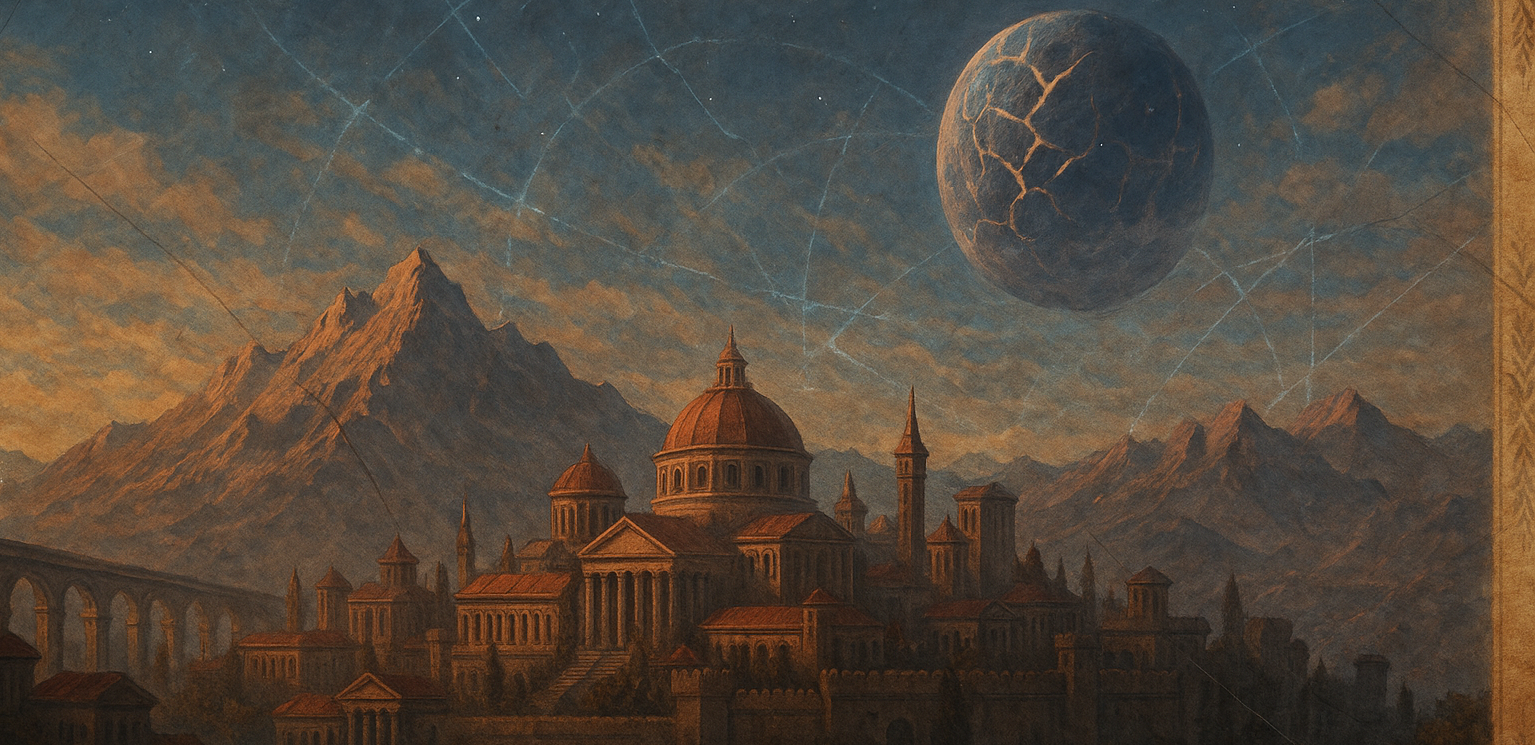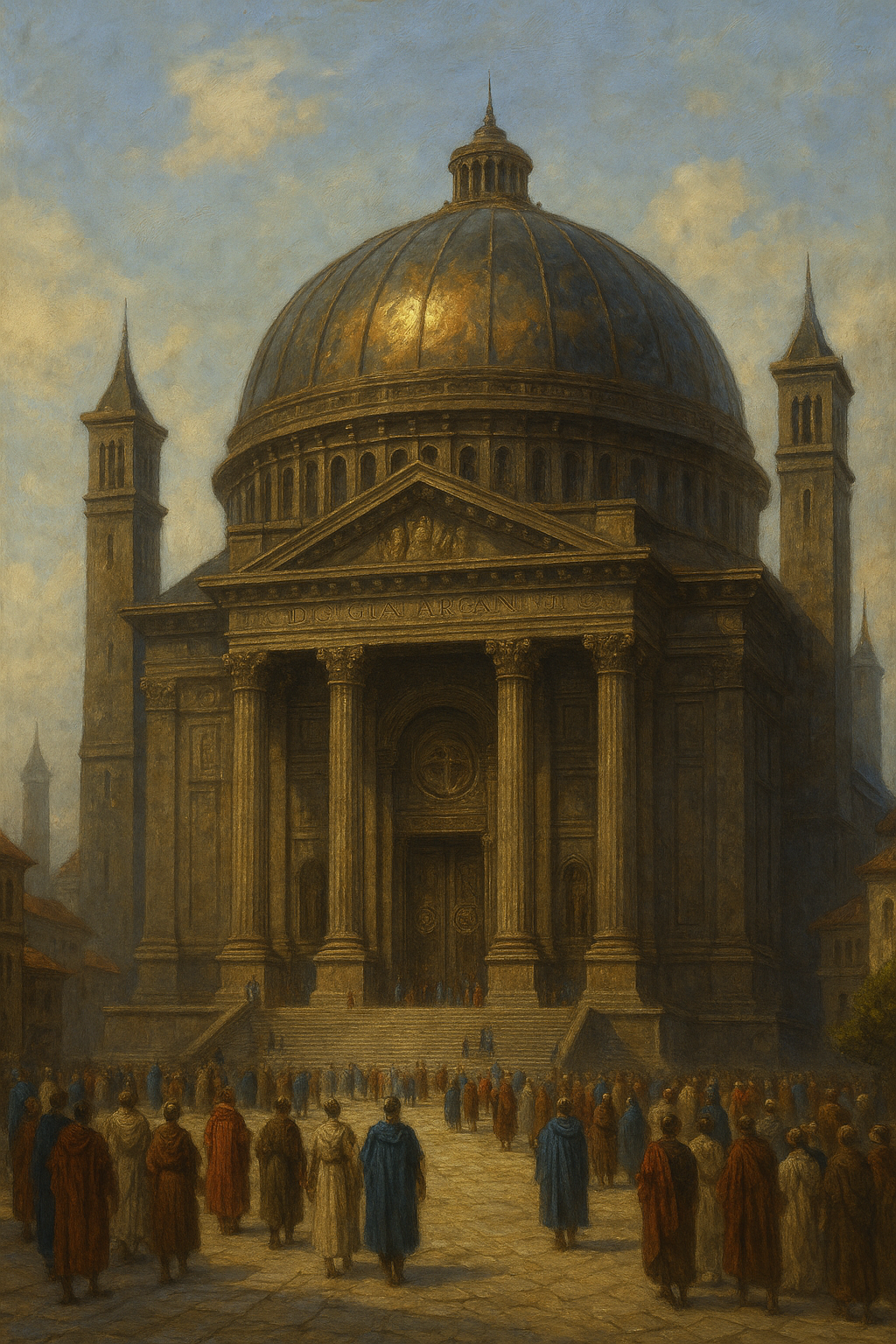Basilica Arcanii
Sanctum of Doctrine, Tribunal of the Arcanii
To step within the Basilica Arcanii is to step into the living will of the Codex Exilia. Here, law transcends mortal parchment. Here, the air itself carries the gravity of judgment, heavy with the weight of enforced doctrine.
The Basilica Arcanii serves as the supreme judicial chamber of the Magisters Arcanii, a sanctum where arcane law is not only written but enacted. Within its walls, spells are not freely woven — they are negotiated, argued, and sanctioned, or forbidden forever. It is tribunal, archive, and sanctum, all bound by the will of the Riftwatch.
Cultural Significance
To the citizens of Nova Roma, the Basilica Arcanii is both revered and feared. It is the place where the difference between a sanctioned practitioner and a rogue conjurer is decided. It is where the very definition of what is magic — and what should not be — is codified.
It is not merely a building. It is a symbol of human dominion over the uncontrollable, a statement that even the Rift itself must bow to Imperial law.
Important Locations Within
The Basilica Arcanii is not merely a building; it is an arcane engine of order, divided into chambers whose very geometries are bound to the will of the Codex Exilia.
At its core lies the Hall of the Flame, a tribunal chamber unlike any other. Here, the Flame of Adjudication burns without fuel, suspended above a Riftsteel well. Its light is impartial. It casts no shadow and offers no warmth — only judgment. Within this space, arguments are not shouted; they are inscribed into ritual diagrams, contested through glyph and counter-glyph, weighed against doctrine.
Encircling the central hall is the Codex Rotunda, a labyrinthine library of legal magic. Its shelves spiral upward toward an impossible ceiling, each tier restricted by degree of clearance. Citizens with proper licenses may access the lower doctrines — histories, sanctioned conjurations, treaty-bound spellforms. But beyond the Seventh Spiral, the air grows heavy, and only the Magisters themselves may walk those forbidden aisles.
Beneath all of it is the Chamber of Weights, a place few speak of and fewer survive. Here, Severances are conducted. Here, Visionings strip away illusions of self. There are no benches for onlookers, only the glyph-etched floor and the Oculus above, open to Tharaxis, the Rift Moon. It is a place where destinies fracture.
Hidden behind unmarked stone is the Archivum Silentii, the silent archive. Its existence is neither confirmed nor denied by the Arcanii. It holds doctrines unspoken — the laws that cannot be written into public record. Proscribed magics. Names erased from history. Failures of the Codex itself.
To the rear stands the Conjurant Sanctum, a space warded even from the Tribunal. Here, the Triumvirate of High Conjurants deliberate in private. Its walls are lined not with shelves, but with Doctrine Flames, each representing a living concept of law — preservation, transformation, and restriction.
The threshold to this world of judgment is the Vestibule of Supplication — where the accused, the unlicensed, the desperate, and the arrogant await their audience with the Tribunal. It is said that the silence in that room weighs more heavily than any chain.
Purpose / Function
The Basilica Arcanii exists not simply as a building, but as the embodied will of law imposed upon magic. It serves three sacred functions, each interwoven with the others, as inseparable as the rings of a containment seal.
First is Judgment. Here, the Tribunal convenes beneath the Flame of Adjudication, parsing the tangled threads of magical crimes, doctrinal disputes, and licensure breaches. A conjurer’s fate may hinge not upon their guilt, but upon whether the pattern of their spell aligns — or fails to align — with precedent.
Second is Containment. The Basilica is not merely a place of words, but of wards. Artifacts too dangerous for the Codex Vault are buried within its stone. Doctrines that cannot be spoken are sealed behind runes that suppress memory itself. Every brick, every glyph, every flowing line of ley-silver in its walls serves the same purpose: to hold the world together against the Rift’s unraveling.
And third is Doctrine. This is the furnace where magical law is refined. Here, the High Conjurants draft amendments to the Codex Exilia. Here, what is permitted and what is forbidden is not just debated but literally inscribed into the metaphysical structure of the world. New precedents ripple outward from this chamber like leyline tremors, shaping how magic may be understood, practiced, and punished for generations.
The Basilica is not merely an arbiter of law — it is a crucible where the Imperium’s mastery over the arcane is forged anew each day.
Architecture
The Basilica rises from the Riftwatch Quarter like an obsidian heart encased in copper ribs. Its facade is a wall of Riftglass — opaque from without, radiant from within. Bronze runic inlays trace across its surfaces, forming an unbroken circuit of containment glyphs.
Inside, the Hall of the Flame defies conventional architecture. Its domed ceiling floats, suspended by ley anchors and gravitational runes. The flame itself burns in mid-air above a hexagonal well of Riftsteel, its light neither warm nor cold — merely absolute.
Every wall, every column, and every stair is a ritual component. The floor patterns are containment circles. The chandeliers are crafted from warded Riftcrystal. The doors bear seals that close not just to sound, but to will.
History
Constructed in Year 7 AR, the Basilica Arcanii was the direct response to the Second Rift Surge, a magical disaster that nearly unraveled Nova Roma's ley boundaries. Since then, it has stood as both bulwark and beacon — a place where every magical law written, every Severance enacted, and every conjuration licensed, traces its roots.
It has expanded three times — most recently in 412 AR, when the Archivum Silentii was added following the Wyrmblight Plague.




Comments